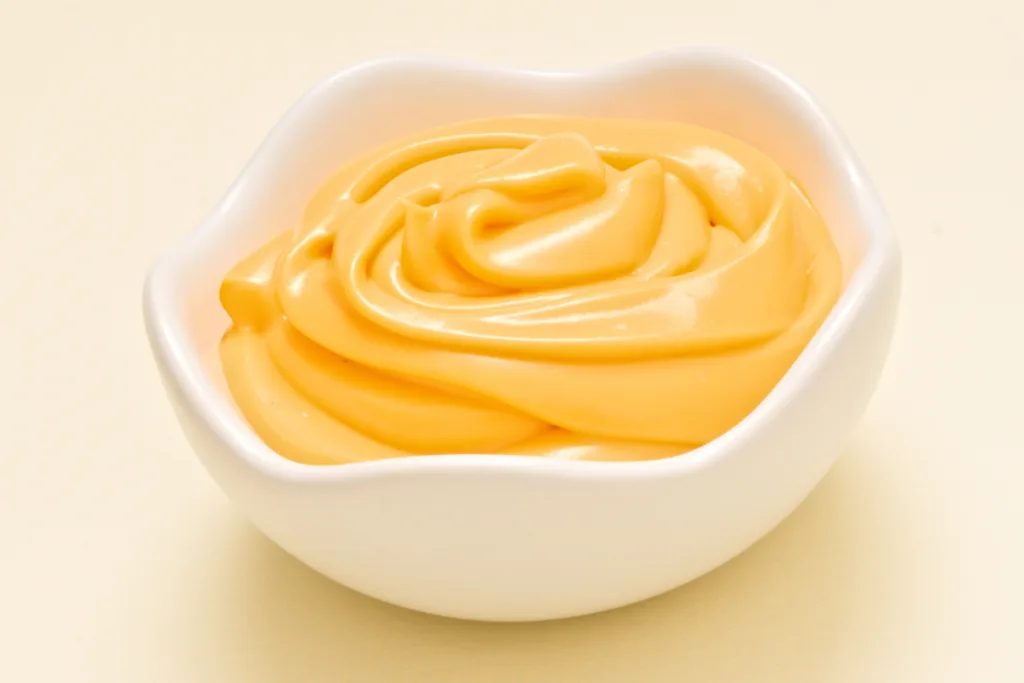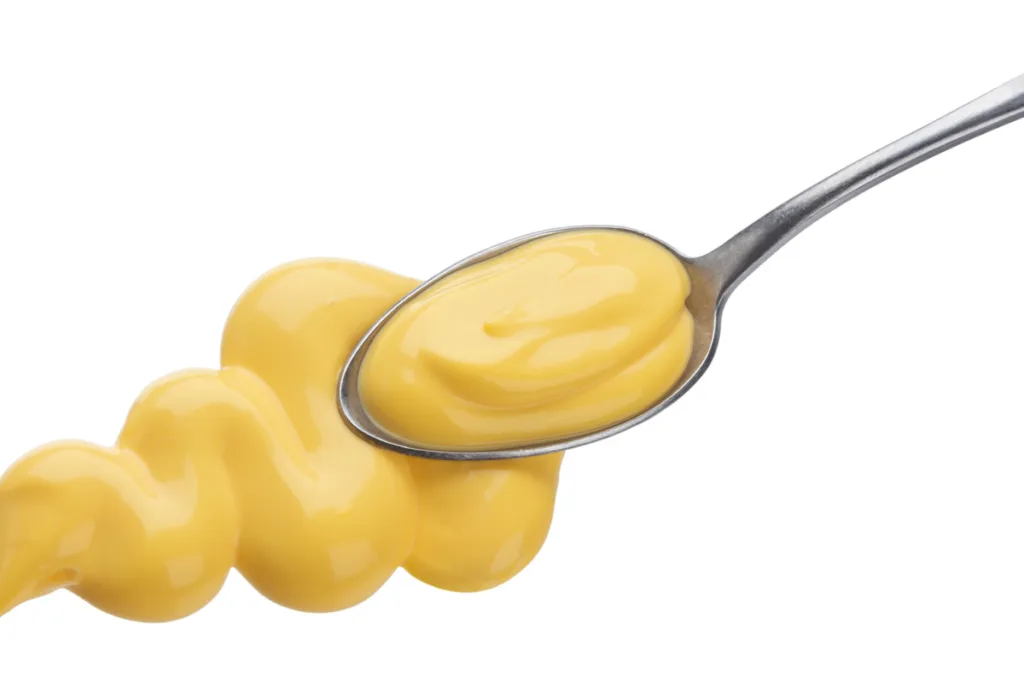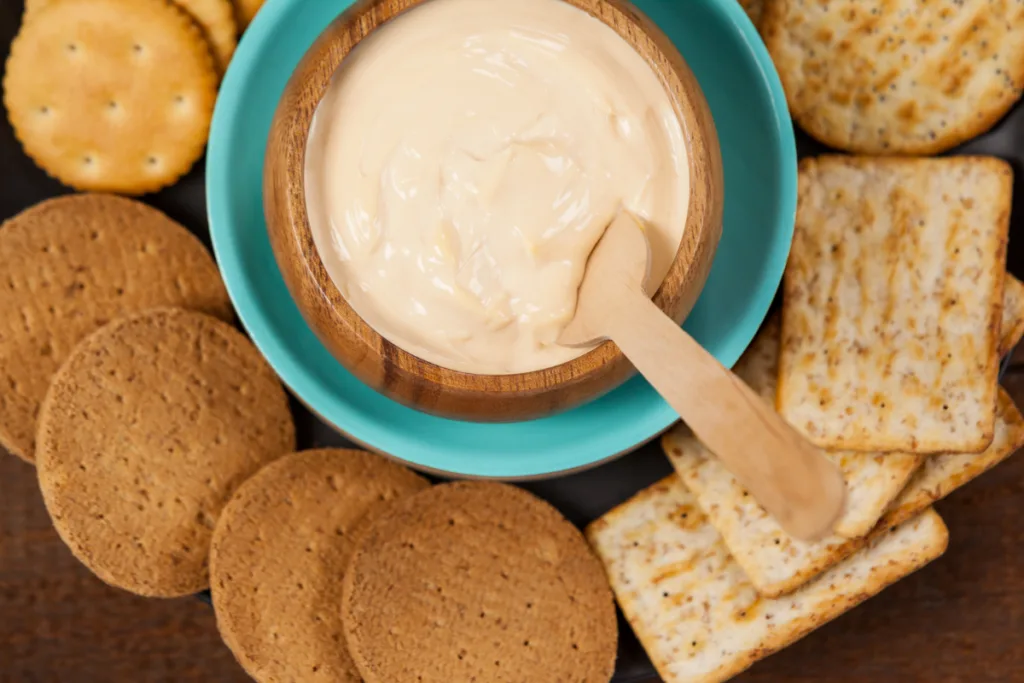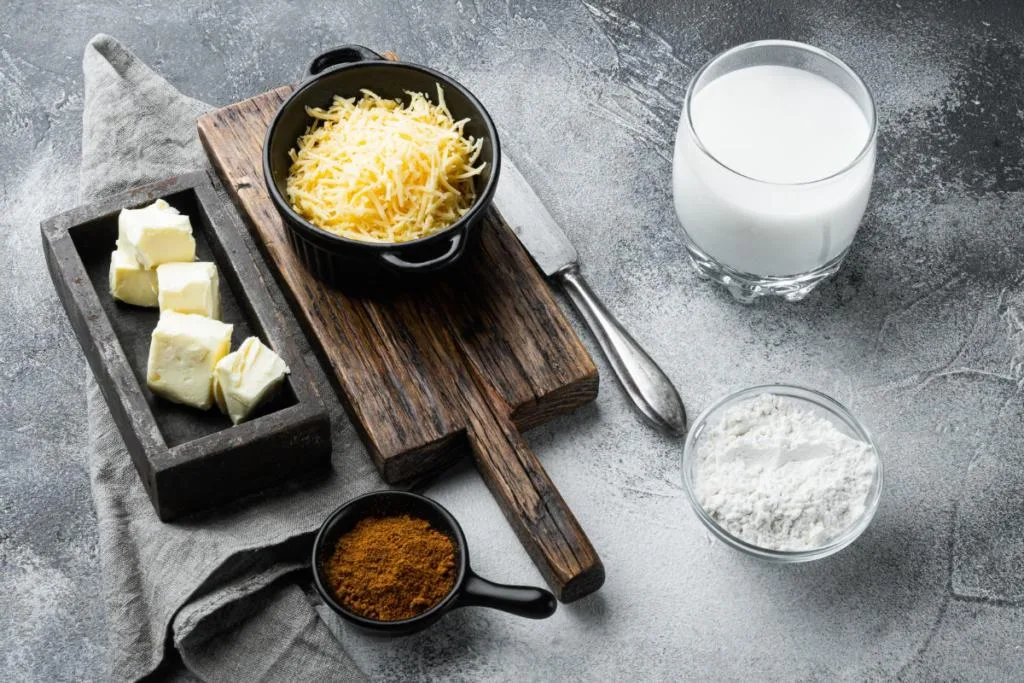A thick and delicious cheese sauce has always been a classic sauce topping for pasta, vegetables, and potatoes while also doubling as a dip for chips, crackers, and vegetables. With so many uses, it’s hard to imagine it without a properly thick consistency. Yet, alas, mistakes can happen, especially in the kitchen, and a runny cheese sauce is an all too familiar case.
Adding a thickening agent, simmering the sauce for a longer period of time, or adding more cheese can all help thicken cheese sauce. I’ll be talking about all this and more, but first, let’s talk about what the perfect thickness should be and give you some helpful tips on how to thicken cheese sauce.

Jump To
Why Is My Cheese Sauce Thin?
Not Enough Cheese
One primary reason behind a thin cheese sauce is the inadequate amount of cheese added to it. Since cheese is the primary ingredient in cheese sauce, an insufficient amount of cheese will affect the thickening of the sauce. So, always make sure that you add an adequate amount of cheese to your sauce.
Not Enough Roux
Another common mistake when making cheese sauce is not using enough roux, which leads to a thin and runny consistency. Roux, made by mixing flour and fat, is a thickening agent commonly used in sauces, one being cheese sauce.
To make it, you’ll first need to melt your butter, then add flour, and stir your sauce constantly until a paste is formed. Achieving a thick and creamy cheese sauce requires using the right amount of roux.
Overcooking
Cheese sauce can become thin and runny if it’s also cooked for too long. Overcooking the sauce can cause the cheese to break down, resulting in a thin and watery consistency, so make sure to not do that. You can easily avoid this by cooking it on low to medium heat while stirring continuously.
Adding Too Much Liquid
Adding too much liquid to cheese sauce can make it thin and flavorless, though you can remedy this by balancing the ratio of liquid to cheese and adding the liquid gradually while stirring constantly. If the sauce is still too thin, more cheese or a thickener like flour or cornstarch can be added.
Not Allowing the Cheese to Melt Properly
Cheese sauce can turn out thin if the cheese within is not melted properly, so heat the cheese slowly and at a low temperature, adding it gradually and stirring constantly until fully melted. This will ensure a smooth and creamy sauce with the desired thickness.

How Thick Should A Cheese Sauce Be?
The thickness of it will greatly depend on personal preference and intended use. Generally, a cheese sauce should be thick enough to coat the back of a spoon without running off too quickly. It should also be thick enough to hold its shape when poured or spooned.
However, the thickness can be adjusted depending on the intended use of the sauce. For example, a thicker sauce may be better for dipping, while a slightly thinner sauce may be better for drizzling over vegetables or pasta.
Tips And Tricks For Creating An Excellent Cheese Sauce
Use the Right Cheese
One of the most important factors in creating a great cheese sauce is using the right cheese. Not all cheeses are created equal when it comes to melting and creating a smooth sauce. Some cheeses, like cheddar, are great for melting and creating a creamy sauce, while others, like parmesan, are better suited for grating over dishes. Picking the right one will most definitely be a game-changer.
Add Liquid Gradually
Even how you add liquid can affect its consistency. Adding liquid too quickly can cause the cheese to become overwhelmed and unable to melt evenly, resulting in a lumpy, thinner consistency. Gradually adding liquid to your cheese sauce is your best shot at avoiding a watery problem.
Begin by adding a small amount of liquid and continue adding more until you have a consistency you’re happy with. This approach ensures that the cheese sauce doesn’t become too thin, making it easier to control the thickness of the sauce.
Use Cornstarch or Flour
If you do find that your cheese sauce is way too thin or on its way there, you can quickly salvage it by adding small amounts of cornstarch or flour, though flour does contain gluten, so bear this in mind. To do this, mix the cornstarch or flour with a small amount of cold water to create a slurry. Once the slurry is ready, add it to the cheese sauce and stir until it thickens.
Use a Double Boiler
If you wanna prevent the cheese from burning in the first place, use a double boiler. A double boiler is a set of two pots, with the top pot sitting on the bottom pot filled with boiling water. The steam from the boiling water heats the top pot, where the cheese sauce is prepared. This method allows for gentle and even heating, which helps to prevent the cheese from overheating and burning.
Add Seasonings
You can even add some seasonings such as garlic powder, onion powder, paprika, or cayenne pepper for a thicker consistency. However, add the seasonings gradually and taste the sauce as you go to avoid over-seasoning it and making it too spicy. This way, you can ensure that your cheese sauce has a delicious flavor that compliments your dish without being too aggressive on taste.

Ways to Thicken Cheese Sauce
Use a Starch Thickener
Starches are popular thickening agents used collectively to add a bulkier texture in many recipes. They work by absorbing the liquid and forming a gel-like substance, which in turn traps the liquid and prevents it from separating, creating a smooth and creamy texture. The starch molecules also help bind the ingredients, creating a more stable mixture.
Cornstarch is one of the most common ones used. It’s a fine, white powder made from the endosperm of the corn kernel and is neutral-tasting and gluten-free. Potato starch is another popular starch made from the root of the potato and is also neutral-tasting and gluten-free.
To use either of them, just mix them with cold water to form a slurry. This slurry can then be added to the hot cheese sauce while stirring constantly until the sauce thickens.
Let It Simmer On Low Heat
If you wanna thicken your cheese sauce with a easy and effective method, simmering it is your best bet. Simmering in low heat allows the ingredients to meld together and thicken properly, resulting in a rich and creamy sauce. All you have to do is reduce the heat to low and let the cheese sauce simmer for a few minutes, stirring occasionally to prevent separation or curdling for a perfect consistency.
Using Egg Yolk
Egg yolks are an age-old ingredient for thickening, giving a richness to the flavor already present. If you wanna use this method, just whisk egg yolks in a separate bowl and add a ladleful of the hot cheese sauce to temper them.
Slowly pour the mixture back into the saucepan while whisking continuously, then let the sauce simmer for a few more minutes to fully incorporate the egg yolks and thicken the sauce. But remember to add them towards the end of the cooking process of the cheese sauce to prevent curdling.

Add More Cheese
I think one of the easier ways to thicken this sauce is to just add more cheese. Cheese contains proteins and oils that are released as it melts, creating a thicker and creamier texture.
You can also adjust the consistency by adding more milk if it’s too thick or more cheese if it’s too thin. Using a combination of cheeses such as cheddar, mozzarella, and parmesan will also enhance the sauce’s flavor. Just add more cheese in small batches and stir until fully melted and incorporated into the sauce. As more cheese is added, the sauce will become thicker and creamier.
Try to Add a New Bechamel Sauce
Considered one of the ‘mother sauces’ of all French cuisine, béchamel sauce is certainly not a common thickener for cheese sauce, but it’s not exactly a bad choice either. Béchamel sauce, a classic French white sauce made from butter, flour, and milk, is often used as a base for other sauces.
The béchamel sauce is made by melting butter in a saucepan over medium heat, adding flour and whisking until smooth, and then gradually adding milk while whisking constantly until the sauce thickens and coats the back of a spoon.
Adding this sauce not only thickens the cheese sauce but also adds a creamy texture and a subtle flavor that compliments the cheese. This technique is particularly useful when making macaroni and cheese or other cheesy casseroles that require a thick, creamy sauce.

Make A Roux And Add It To The Sauce
A roux is a mixture of equal parts flour and fat, usually butter, that can serve as a great thickener. When combined with a liquid, such as milk or cream, it acts as a heavy thickener.
Making a roux for cheese sauce is as simple as melting butter in a saucepan over medium heat, adding an equal amount of flour, and whisking until the mixture turns a light golden color. Now, gradually add milk or cream to the pan, whisking constantly to prevent lumps from forming. As the mixture heats up, the roux will thicken the liquid, creating a creamy base for the cheese sauce.
You can also add shredded cheese to the pan while whisking until it has melted and the sauce is smooth, completing the process. Whisking constantly and cooking the mixture until it turns a light golden color are critical steps to prevent lumps from forming and ensure that the flour is cooked properly.
